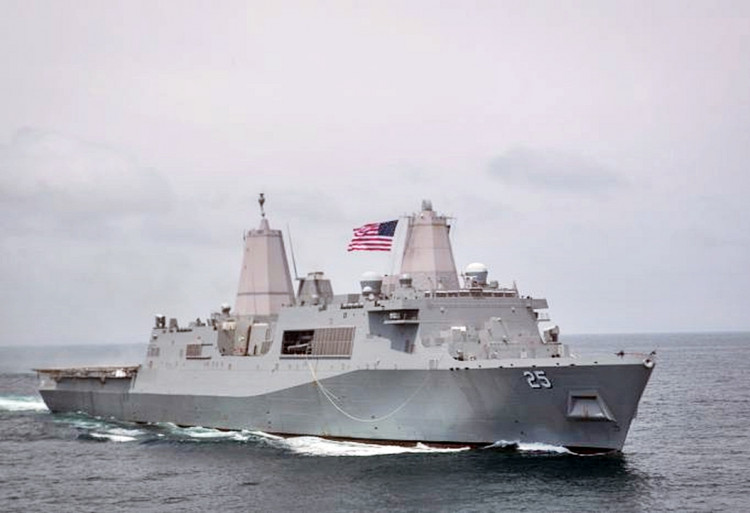The U.S. Navy has begun testing a new combat group concept that will improve the capability of U.S. Marines to quickly invade and conquer islands in Asia controlled by a strategic enemy.
Tested late in 2018 was a new ship combination that paired an Arleigh Burke-class guided-missile destroyer with a San Antonio-class Landing Platform, Dock (LPD) during exercises off Chile. The Navy said this new concept might supplement amphibious squadrons and Surface Action Groups (SAGs) as a formation in future naval operations.
Asia is the only location in the world where Marines are likely to engage in amphibious operations and combat. China is the main U.S. military rival in this strategically and economically important region.
USS Wayne E. Meyer (DDG-108) partnered with USS Somerset (LPD-25), and Special Purpose Marine Air-Ground Task Force-Peru (SP-MAGTF) to create Littoral Combat Group-1 (LCG-1) in November and December.
Operations conducted by LCG-1 leveraged both ships' key mission -- supporting Marines and pushing them ashore. Both warships sailed to Valparaiso, Chile, for the Eleventh International Maritime and Naval Exhibition and Conference for Latin America (EXPONAVAL) and the 200th anniversary of the Chilean Navy.
Operations by LCG-1 were part of the Enduring Promise Initiative that seeks to reaffirm the long-standing commitment by U.S. Southern Command to countries in the Western Hemisphere.
The goal of the LCG-1 exercise was to work out command and control operations. The exercise placed a Navy captain as the commodore of both ships and the SP-MAGTF.
The guided-missile destroyer will launch missiles at an enemy defense system to allow attacking Marines to storm ashore on enemy-held islands such as those occupied by the People's Liberation Army in the South China Sea.
The United States Third Fleet, which controlled operations by LCG-1, said the deployment of LCG-1 was designed to test a command and control concept. LCG-1 provided command and control of both warships under a single commander.
The complementary capabilities brought by the assigned Navy and Marine Corps units will inform future force development, both in how the Navy organizes its naval forces and how it employs them.
LCG-1 also conducted several partnership training missions while underway and ashore in the U.S. Southern Command area of responsibility. LCG-1 reported directly to U.S. Third Fleet and U.S. Fourth Fleet during the deployment.






